
The High Desert Museum in Bend, Oregon, has a gallery which takes visitors on a journey through some of the most dramatic periods in the High Desert. According to the Museum display:
“Thousands of years ago, more than one hundred Native American tribes inhabited the High Desert. During the early 1800s, newcomers began arriving—starting with fur traders and continuing with homesteaders through the early 1900s. A diverse array of immigrants added their stories to the region’s history.”
One of the dioramas features the trappers and traders in the high desert.
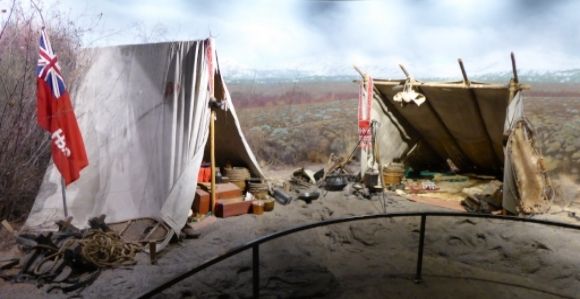 Shown above is a fur trader’s camp. The flag indicates that this is Hudson’s Bay Company, a London-based trading company which had all of the powers of a nation-state.
Shown above is a fur trader’s camp. The flag indicates that this is Hudson’s Bay Company, a London-based trading company which had all of the powers of a nation-state. 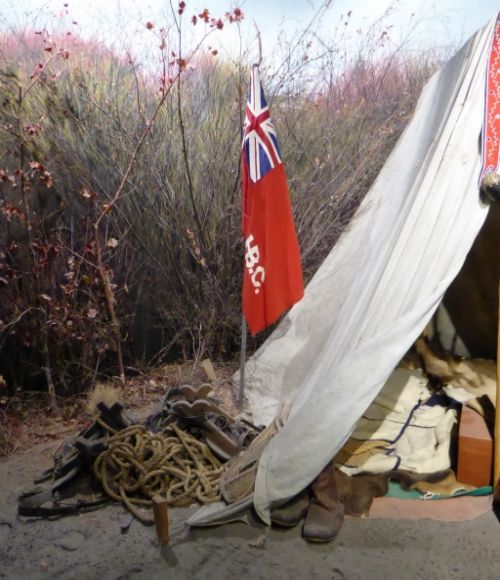 Shown above is the Hudson’s Bay Company flag. The company’s initials, H.B.C., were often jokingly said to stand for “Here Before Christ.”
Shown above is the Hudson’s Bay Company flag. The company’s initials, H.B.C., were often jokingly said to stand for “Here Before Christ.”
The Hudson’s Bay Company was granted a Royal Charter by the British Crown in 1670. The company was headquartered in London. The standard trade items used by the Hudson’s Bay Company included steel traps, pots, strike-a-lights, and whiskey. In addition, the Company also supplied the Indians with guns and ammunition. The trade gun was a muzzleloading, smooth bore flintlock that could handle either ball or shot.
In 1821, the Hudson’s Bay Company and the North West Company merged creating a large fur trading and trapping monopoly in the Columbia Region (now Washington and Oregon). Historian Nathan Douthit, in an article in the Oregon Historical Quarterly, reports:
“The HBC strategy was to delay American advances by trapping out the beaver west of the Rockies, thereby discouraging American fur companies from further westward penetration. This lead HBC to adopt a different attitude toward the Indians south of the Columbia River than they had adopted previously to those north of it. Instead of treating them as partners in the fur trade, the HBC now took whatever beaver pelts it wanted by force of men, arms, and its own fur-trapping activity.”
The HBC policy in Oregon was to create a fur desert: that is, to deplete the fur resources before the American trappers could exploit them. The focus was on short-range profits rather than creating long-range fur-trade ties with the Natives.
Lean-to shelters, such as the one shown above, often served as the company store: goods for trade would be spread out so that they could be seen by the Indians who had come to trade.
Among the European goods which many Indians desired were blue glass beads. Beads were used to replace quills and shell beads in decorating clothing and other items.
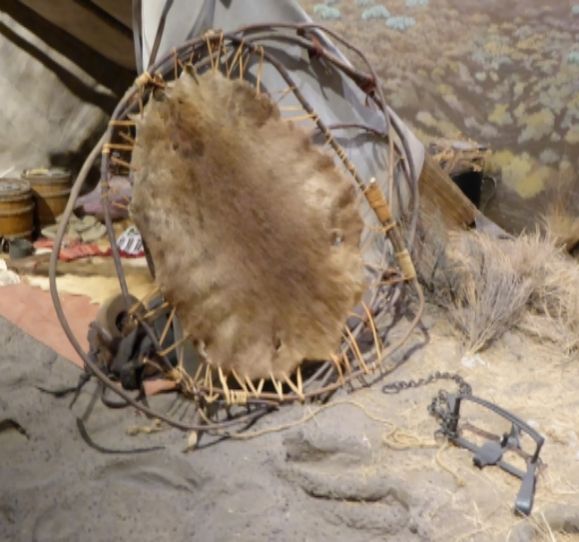 Shown above are a made beaver pelt and a steel trap. The traps were generally made by the blacksmiths at the trading posts, such as Fort Vancouver.
Shown above are a made beaver pelt and a steel trap. The traps were generally made by the blacksmiths at the trading posts, such as Fort Vancouver. 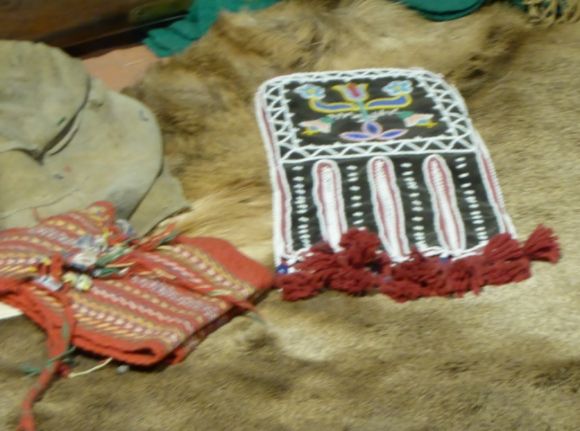 Traders also carried Native-made items for trade.
Traders also carried Native-made items for trade.
The Euro-american traders traded not only manufactured goods, but they also included in their inventories many products which had long been a part of Indian trade. This included raw materials such as wood for bows, feathers, and stones, as well as agricultural products such as corn and tobacco.
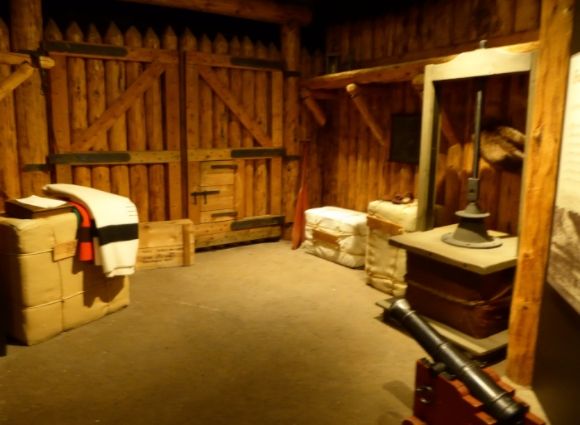 The fur trader companies also built permanent traders’ posts or forts, such as the one shown above.
The fur trader companies also built permanent traders’ posts or forts, such as the one shown above.
According to the Museum display:
“In the early 1800s, English and American fur companies competed for the region’s wealth of beaver pelts. The Hudson’s Bay Company dominated and established strategic forts to supply trappers, trade with Native Americans, and maintain a presence for future claims. These forts were communities unto themselves, with skilled craftsmen, farms and trade stores. They were the first foothold in the settlement of the High Desert.”
 Shown above is an artist’s sketch of Fort Nez Perce which was established in southeastern Washington in 1816.
Shown above is an artist’s sketch of Fort Nez Perce which was established in southeastern Washington in 1816. 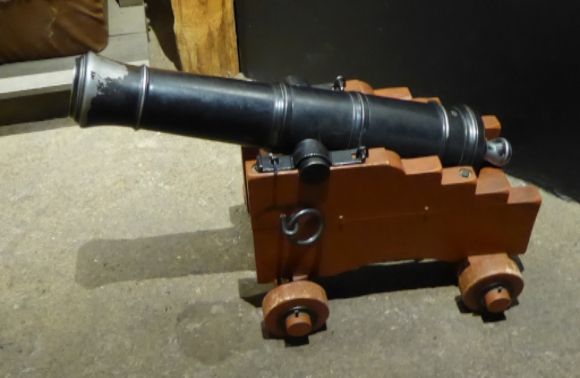 Most of the forts had small cannons such as the one shown above.
Most of the forts had small cannons such as the one shown above.
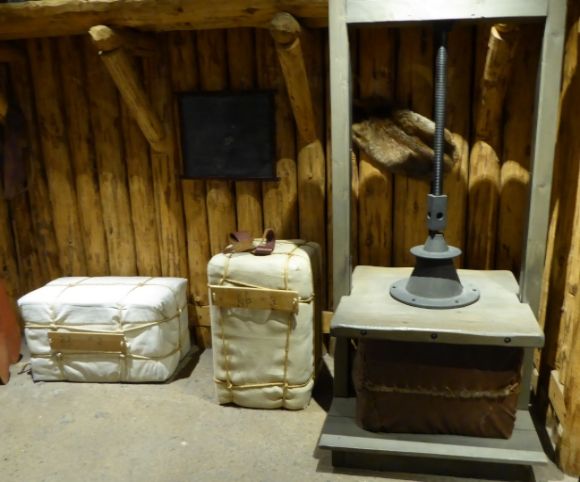 Shown above is a fur and hide press (on right) which compressed the furs into bundles for shipping.
Shown above is a fur and hide press (on right) which compressed the furs into bundles for shipping.
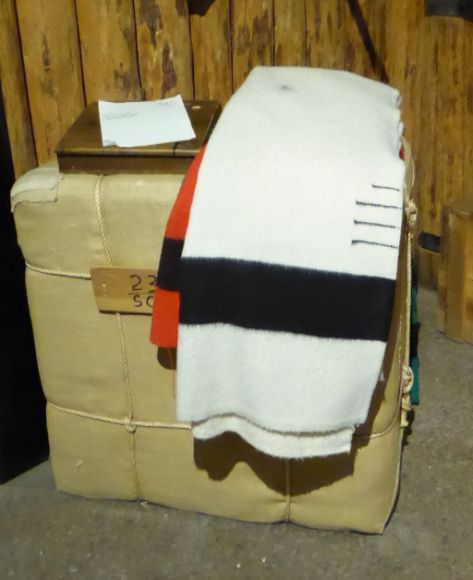 Shown above are the famous Hudson’s Bay Blankets which were developed for trade with American Indians. The small stripes on the blanket, known as points, mark the value of the blanks. The white blanket shown above is a three-and-a-half point blanket.
Shown above are the famous Hudson’s Bay Blankets which were developed for trade with American Indians. The small stripes on the blanket, known as points, mark the value of the blanks. The white blanket shown above is a three-and-a-half point blanket. 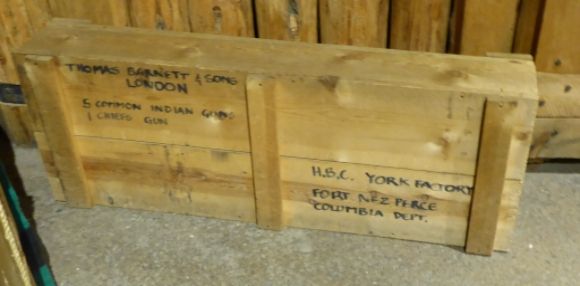 The box shown above is labeled as containing “common Indian guns” which were designed specifically for American Indians. The designation “H.B.C. York Factory” indicates the trading post on Hudson’s Bay which served as the shipping point to and from Europe.
The box shown above is labeled as containing “common Indian guns” which were designed specifically for American Indians. The designation “H.B.C. York Factory” indicates the trading post on Hudson’s Bay which served as the shipping point to and from Europe. 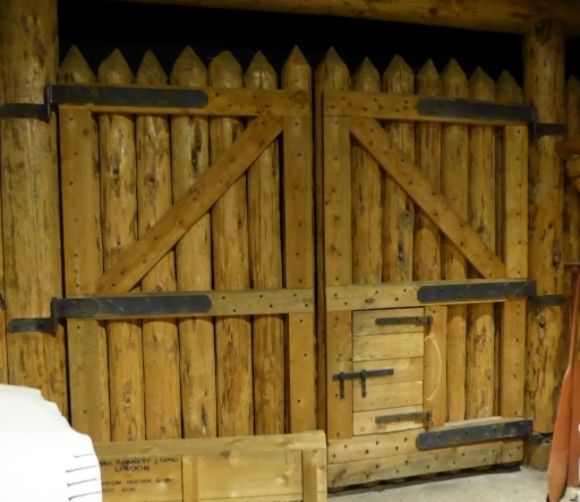 The small door in the large door allowed individuals access to the fort.
The small door in the large door allowed individuals access to the fort.
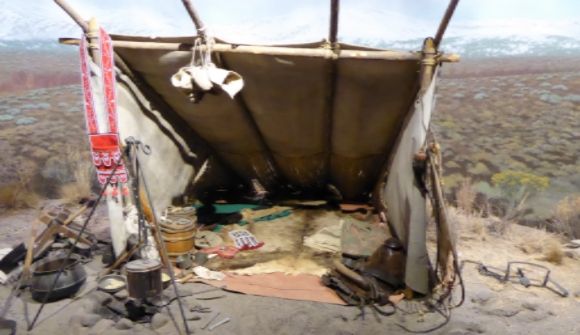
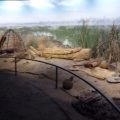
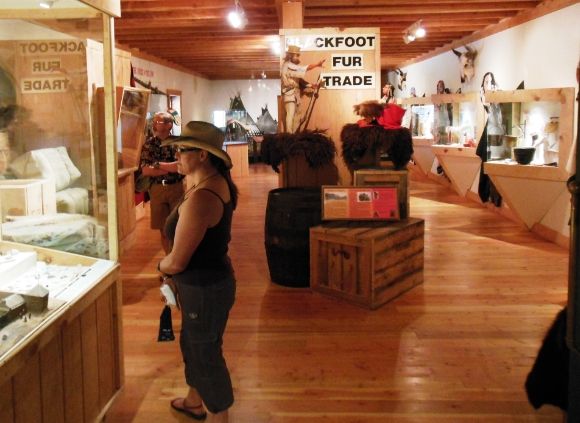
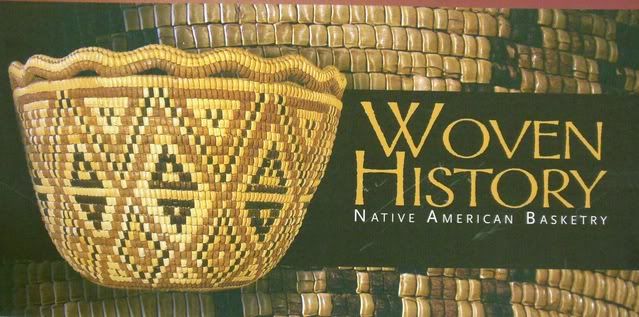
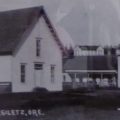
Leave a Reply